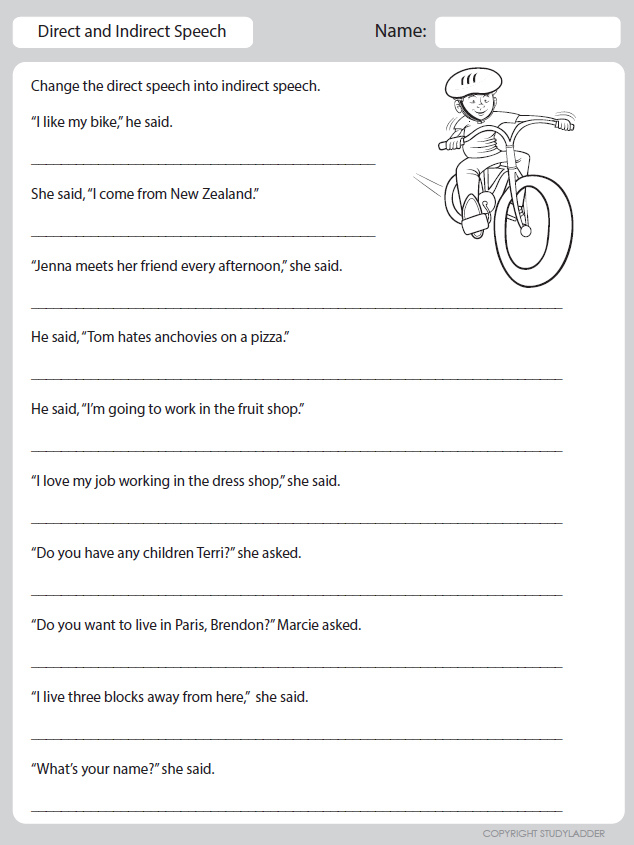- DIRECT AND INDIRECT SPEECH. The Learning Objectives At the end of the lesson, students are able to: 1.Analyze the sentence of direct and indirect speech correctly; 2.Compose sentences using reported speech/indirect speech well; 3.Find the direct and indirect speech from the news item text. Before we start let’s listen to the breaking news.
- We decided to share a text to speech option integrated with Google text to speech API after many requests from our clients. Now you can convert text to voice, download it as an mp3 file, upload the audio file to the video editor and make your videos more dynamic with a professional voiceover.
It is highly unlikely that such a free service exists. I haven’t heard of one. And identifying a quote and then revising it in that way would be a very difficult problem for natural language processing, even if it is a trivial task for a human bra.
An easy way to convert text to voice that’s fast and straightforward – it’ll make your message more catchy and inclusive.
Write your message directly into the box below or upload a text file from your computer, choose the voice you like most, pick the speed, and that’s it!The online voice generator will make do its magic. Click play to listen to your message and download it as an mp3 file.
It’s simple and free.
If you’re planning on creating a demo video or an explainer video, you should consider the option of adding a voiceover to your video.
The main objective of an explainer video is to explain a concept clearly. Including a narration to the video will make it much more catchy. Text to speech technology simplifies the process to include voiceovers in your videos.
The video that we are showing in this section was created with Wideo, using the text to speech tool for the narration.
Wideo is an online video maker with more than 2.5 million registered users around the world. Create promo videos, explainer videos, demo videos, presentations, etc. No experience is needed. Anyone can create professional videos using Wideo.We decided to share a text to speech option integrated with Google text to speech API after many requests from our clients. Now you can convert text to voice, download it as an mp3 file, upload the audio file to the video editor and make your videos more dynamic with a professional voiceover.
Generate your mp3 file with an online voice generator and use it in any of our video templates, which have been pre-designed by professionals.
Need help creating your videos?
Talk to our Wideo Pros and get a quote on an editable video of your own.
What is TTS?
TTS is the abbreviation of Text to Speech, a technology that converts text to voice. It has different applications: it could be used to create a voiceover for a video or to help people with visual problems to “read” texts.
What is the best free text to speech?
There are many online tools that you can use to convert text to voice. Some of them charge for use, but there are other free options, for example:
- Wideo Text to Speech
- ttsreader
- ispeech
- Naturalreaders
How do text to speech programs work?
Most of the text to speech tools work similarly. You have to type the text you want to convert to voice or upload a text file. Then you have to select the voices available and preview the audio. Once you find the most suitable voice, you can download the mp3 file.
How do I use Google Text to Speech?
You can integrate Google text to speech via Google API. Google charges for the number of characters used. But you can find tools like Wideo Text to Speech that have already integrated Google TTS technology and offers a free option.
Reported speech tenses will change from that of the direct speech in most cases.

This is known as backshifting in reported speech, with the basic rule that a tense is shifted back to its past tense form.
This is because we are usually talking about something in the past.
You can also watch a video of this lesson:
Backshifting in Reported Speech
Here are some examples of backshifting, with tenses going back from present to past:
Reported Speech Tenses Change Chart
Below is a reported speech tense change chart with the rules for backshifting for each tense and for modal verbs.
You will see reported speech does not go back a tense if it is already in the past perfect (there is no further back it can go), and some modal verbs also do not change.
If you are tested on this, though, these are the changes you need to make.
Exceptions to the rules
This is a useful starting point. However, it is a simplification as we may not always decide or need to shift the tense back.
For instance, if the circumstances we are reporting on have not changed since they were directly said, then the tense would not need to be changed. For example:
Reported Speech
- She said she is happy
- (present simple)
So if we want to convey that the situation is still true then we may keep the tense the same.
Alternatively, the tense could even forward shift. An example would be in relation to a film or book. In this case, the person may use the past tense to say that the film was good, but the present or past tense could be used when you convey that to someone else:
Direct To Indirect Speech Converter software, free download Adobe Reader
Direct Speech:
- The film was really good!
- (past simple)
Reported Speech:
- He said that the film was very good!
- (past simple)
Or - He said that the film is very good!
- (present simple)
As you can see, either reported speech tenses would be ok if you wanted to pass the information on to somebody else. The person said the film was good, and it is still good (it hasn't gone away).
So there are some general rules for reported speech tense changes but it can depend on the context. There may be no need to change it or you may be able to choose either tense.
Direct Into Indirect Speech
Practice
Do you want to practice your knowledge of reported speech tenses? Try this reported speech quiz where you have to change direct speech to reported speech.
- >>
You might like these
Multi-word Verbs: Understanding Phrasal and Prepositional Verbs
There are three multi-word verbs: prepositional verbs, phrasal verbs, and phrasal-prepositional verbs.
Transitive and Intransitive Verbs
Transitive and intransitive verbs are different in transitive verbs must have a direct object, whereas intransitive verbs do not. In this grammar lesson we will look at the differences between them and study some examples.
Sign up for free grammar tips, quizzes and lessons, straight into your inbox
New!Comments

Any questions or comments about the grammar discussed on this page?
Direct And Indirect Speech Worksheets Pdf
Post your comment here.